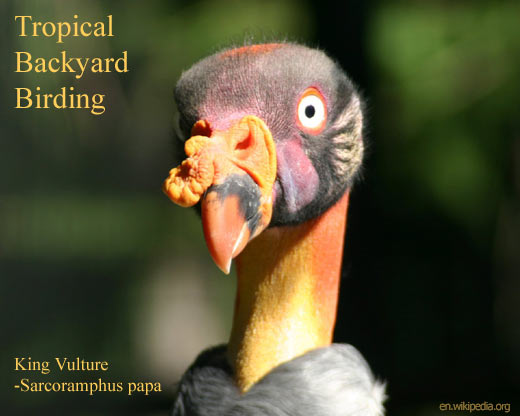
|
When I first encountered the King Vulture, it was just a little after eight in the morning as I was bouncing along the long stretch of dirt road just past the crossroads referred to by most locals in the Toledo District of southern Belize as “the dump”. At first I only noticed one perched atop a dead tree just off to my left. Then as I got closer, I realized there were about fourteen to sixteen huge vultures devouring the carcass of what appeared to be a gibnut. The King Vulture or American Vulture, scientific name Sarcoramphus papa, stands for Cib, the thirteenth day of the month in the hieroglyphics of the Pre-Columbian Maya calendar. They are not considered to be under threat in their habitat in the tropical rainforest from South Mexico to Southern Argentina. At average weight of 3.8 kilograms and standing tall at around 85 centimeters, the carnivorous King Vultures do no kill their prey, they eat carrion or animals that are already dead. Generally they rely upon other vultures like the Turkey Vulture or Candors to locate the dead animals. The King Vulture then joins in on the feed, generally dominating the feed over other species that gather. Because the King Vulture has the superior strength they often rip open the carcass a move that in turns allow more birds to feed. Interesting points about the King Vultures, they use warm air thermals to allow them to soar and stay aloft for the most part of the day. They also have a digestive system that is very conducive to digesting bacteria. This is ecologically important in that the King Vultures dispose of rotting and decaying carcasses that in turn protects against the spread of disease. King Vultures have been know to live in excess of thirty years.
Although very little is actually known about the King Vultures,
there is no known species that preys on the bird. Of course, once
man encroaches upon their habitat through deforestation as is
this case from Mexico to Brazil, the King Vultures in time will
dethroned and ultimately be wiped off the face of the earth. |
| Belize Audubon Society |


